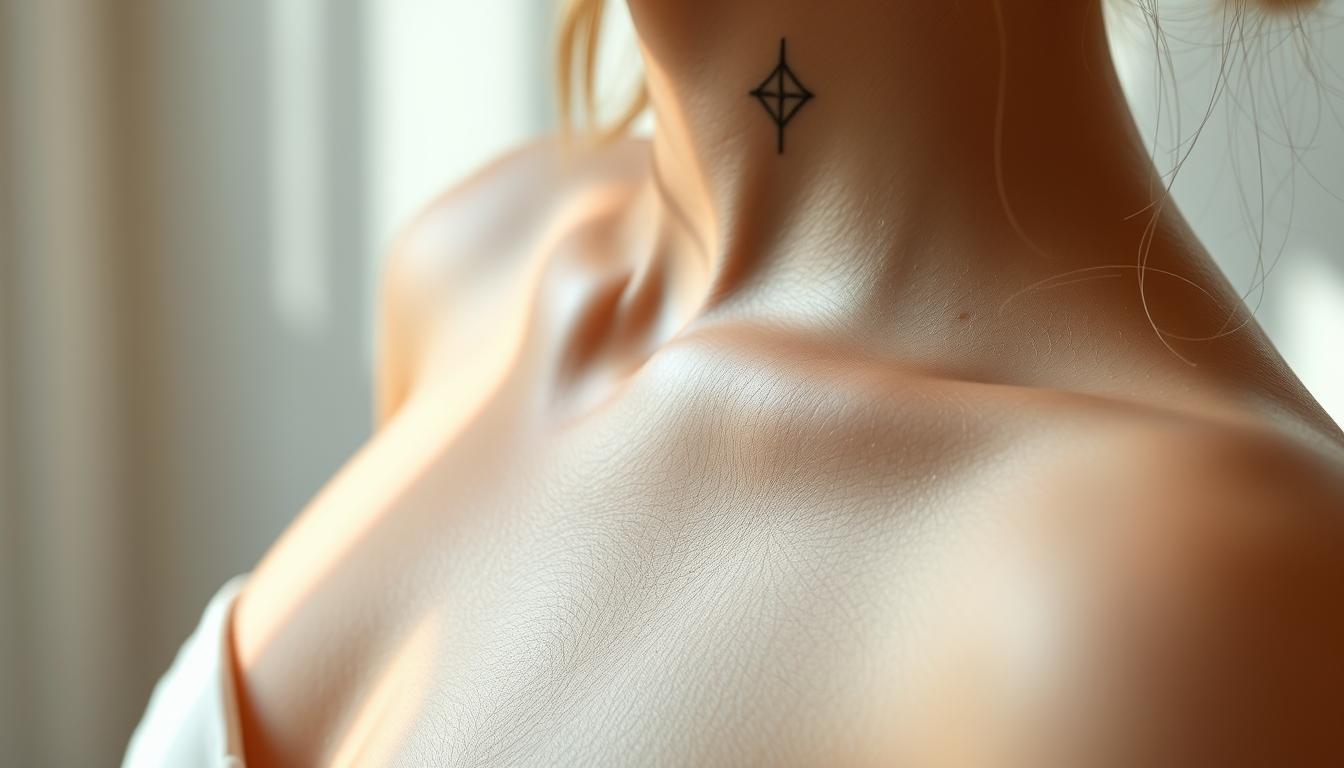
In today’s tattoo world, there’s a growing appreciation for art that whispers rather than shouts. Delicate designs with thin, precise strokes have become a go-to choice for those craving sophistication without boldness. This style blends subtlety with striking detail, creating pieces that feel both personal and polished.
What makes these pieces stand out? Their ability to capture intricate imagery through barely-there lines. Whether it’s a symbolic shape or nature-inspired art, the focus is on clean execution. Many find this approach ideal for expressing meaningful stories in a way that complements their lifestyle.
If you’re exploring body art options, consider how this trend balances self-expression with versatility. It’s perfect for first-timers or collectors wanting additions that age gracefully. For more inspiration, browse our curated collection of elegant tailored to modern tastes.
Key Takeaways
- Thin-line designs offer a refined alternative to traditional bold tattoos
- Delicate artwork appeals to those valuing subtlety and precision
- Versatile for both professional settings and personal meaning
- Ideal for first-time recipients and experienced collectors
- Requires specialized aftercare to maintain crisp details
Introduction to Minimalist Fine Line Tattoos
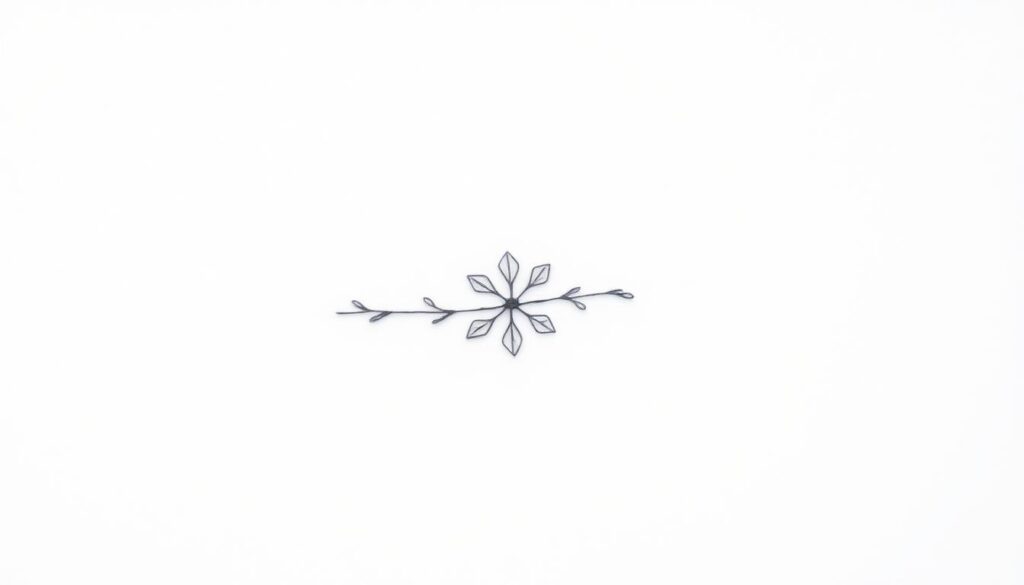
Precision and subtlety take center stage in modern body art trends, offering a refined alternative to traditional designs. Unlike bold, saturated pieces, this approach uses razor-thin strokes to craft intricate patterns and symbols. Each curve and angle demands meticulous attention, transforming skin into a canvas of understated elegance.
Artists specializing in this style often work with single needles to achieve feather-light lines. While black ink remains popular, soft washes of color can add depth without overpowering the delicate aesthetic. Think blush-pink petals on a botanical piece or muted gold accents in geometric shapes.
Creating these designs requires patience—both from you and your artist. Sessions may last longer than expected, as steady hands navigate complex details. The payoff? A timeless piece that feels personal, like meaningful small tattoos designed to resonate with your story.
Why choose this method? It’s perfect for those who value artistry that doesn’t shout. Whether it’s a constellation on your wrist or a minimalist animal silhouette, the result whispers sophistication. Plus, these pieces adapt seamlessly to professional environments while maintaining their emotional impact.
The Artistry Behind Fine Line Tattooing
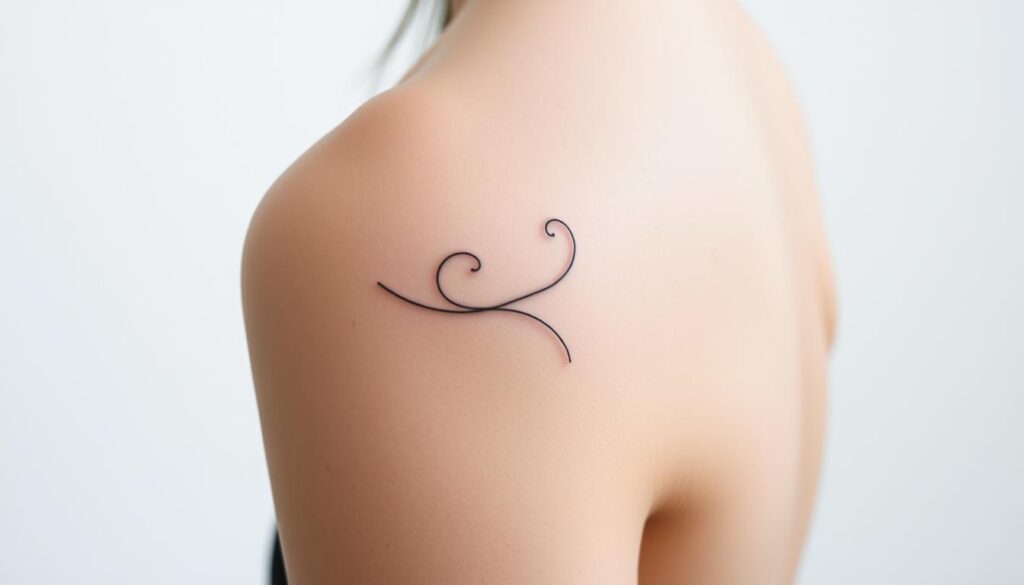
Imagine artwork so precise it rivals pencil sketches—welcome to the world of needlepoint body art. Unlike bold traditional styles, this approach transforms skin into a canvas of microscopic detail, where every stroke carries weight. Specialists in this field don’t just ink designs—they engineer them with surgical accuracy.
What separates exceptional artists from the rest? Their ability to maintain razor-sharp lines while navigating curves and angles. One slip could blur delicate patterns, which is why steady hands and magnified focus are non-negotiable. As one professional puts it: “It’s like drawing with a single-hair brush—every millimeter matters.”
These creations adapt beautifully to any vision. A tiny constellation might take 20 minutes, while intricate floral sleeves demand multiple sessions. The common thread? Each piece relies on advanced shading techniques that give flat images depth without heavy contrast.
Finding someone skilled in this work requires research. Review portfolios for consistent line quality and healed results. Remember: true mastery shows in how details hold up over years, not just fresh ink. Your chosen creator should make complexity look effortless—like they’re sketching with gravity turned off.
Features and Benefits of a “minimalist fine line tattoo”
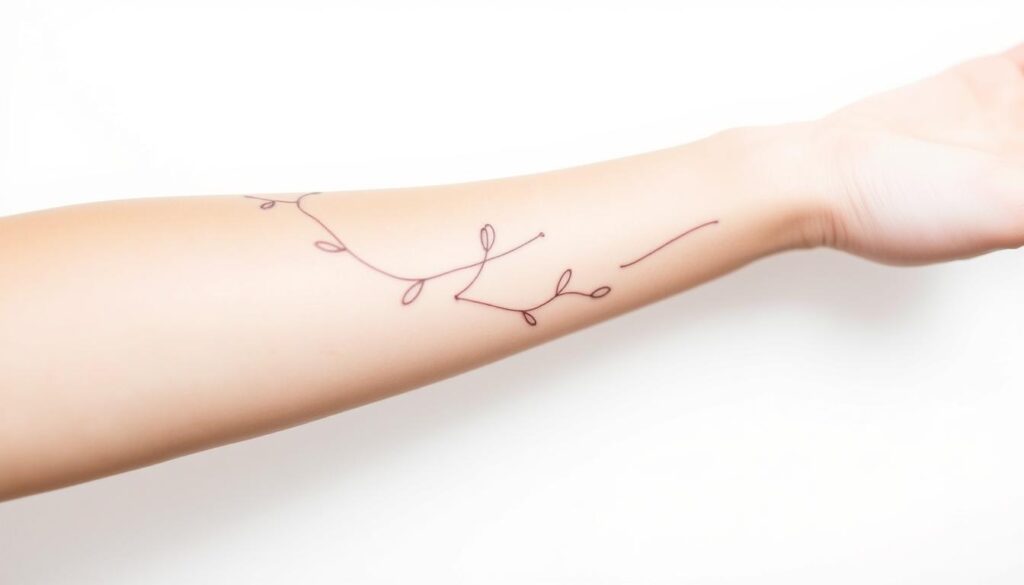
Delicate body art has carved out a unique space for those wanting subtle self-expression. Unlike traditional tattoos with bold outlines, these designs use whisper-thin strokes to create intricate details. This approach lets you participate in body art culture while maintaining a refined aesthetic that suits professional settings.
One standout advantage? Size flexibility. Thinner lines mean your artist can craft meaningful artwork even in tight spaces like fingers or behind the ear. You’re not limited to large areas—a tiny symbol or script becomes possible without losing clarity.
Your skin will thank you too. The gentler process causes less trauma compared to thicker needles, leading to faster healing times. Most clients report minimal redness and quicker recovery, perfect for busy schedules.
First-timers especially appreciate how approachable this style feels. The technique’s precision allows for small meaningful designs that carry emotional weight without overwhelming your canvas. Whether it’s a discreet reminder or a shared secret, these pieces grow with you while keeping their crisp appeal.
Exploring Tattoo Styles: Chicano, Illustrative, Minimalism, Micro-Realism
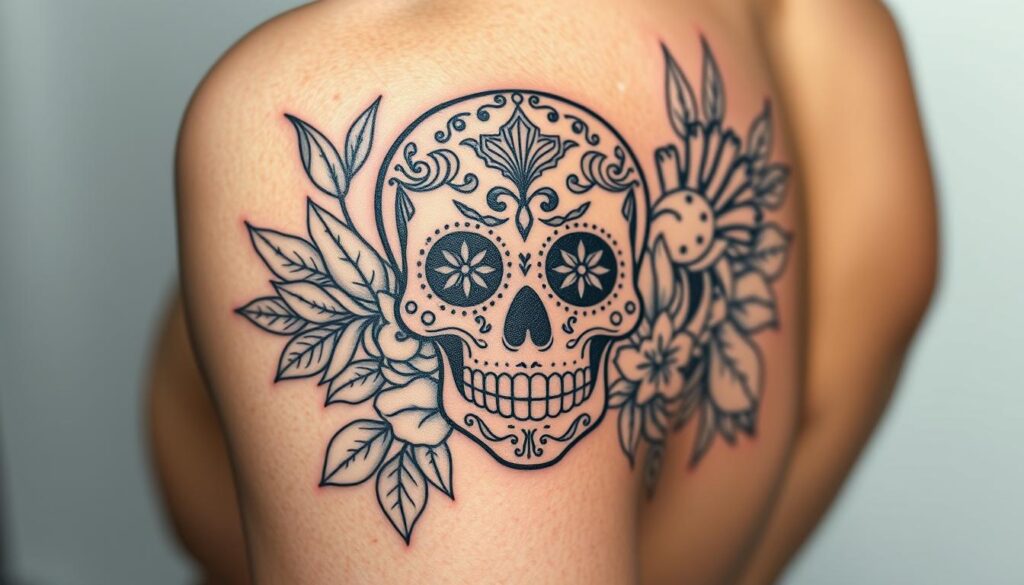
Body art thrives on diversity, and nowhere is this more evident than in styles that master the balance between cultural heritage and modern technique. From bold cultural statements to whisper-thin details, these approaches prove single-needle work can carry immense depth. Let’s unpack how four distinct methods use precision to tell stories.
Chicano Style: History and Iconography
Born in 20th-century California, Chicano artistry emerged from Mexican-American communities and prison systems. Artists transformed limited tools into intricate scenes of cultural pride—think roses symbolizing struggle or religious icons representing hope. Single-needle techniques brought delicate lettering and neighborhood portraits to life, blending rebellion with reverence.
Minimalism: Subtle, Modern, and Timeless
This approach strips designs to their essence. A mountain range becomes three crisp peaks; a galaxy condenses into dot-work constellations. Popular for wrists and ankles, these pieces prioritize clean silhouettes over complexity. It’s ideal for those wanting symbols that feel personal without dominating their canvas.
Illustrative work bridges traditional tattooing and fine art. Think sketch-like animals or botanical studies lifted from nature journals. Artists replicate pencil strokes and shading gradients, proving thin lines can mimic charcoal or ink washes.
Micro-realism pushes boundaries further. Imagine portraits smaller than a quarter, where eyelashes and fabric textures appear photorealistic. This style demands surgical precision—a testament to what skilled artists achieve with patience and single needles.
Inspiration from Nature: Flowers, Animals, and Landscapes

Nature’s endless beauty offers the perfect blueprint for body art that feels both personal and universal. Artists transform organic shapes into wearable stories using precise strokes that mirror life’s delicate balance. This approach lets you carry meaningful symbols that resonate with your connection to the earth.
Botanical and Realistic Designs
Floral motifs shine in this style. Think dahlia petals rendered with hair-thin strokes that follow natural curves. A skilled artist can replicate vein patterns on leaves or the soft gradient of a blooming rose. These pieces often look like botanical sketches come to life.
Animal portraits gain new depth with single-needle techniques. Fur textures appear through layered lines, while eyes capture lifelike expressions. One client described their wolf design: “It’s like he’s about to step off my arm.”
Nature-Inspired Symbols and Forms
Simplified elements work beautifully for discreet placements. A single pine needle or acorn outline carries symbolism without clutter. Mountain ranges become geometric silhouettes, perfect for collarbones or ankles.
Landscapes thrive in this medium too. Artists build depth using varying line weights—darker strokes for foreground trees, lighter ones for distant horizons. The result? A wrist-sized forest that feels three-dimensional.
| Element | Style | Key Details |
|---|---|---|
| Flowers | Botanical accuracy | Petal layers, stem curvature |
| Animals | Textured realism | Fur patterns, eye highlights |
| Landscapes | Atmospheric depth | Line weight variation, shading |
Whether you choose a sprawling scene or a single bloom, these designs adapt to your vision. They honor nature’s complexity while keeping your skin’s canvas balanced and intentional.
Precision Techniques: Single Needle and Fine Lines
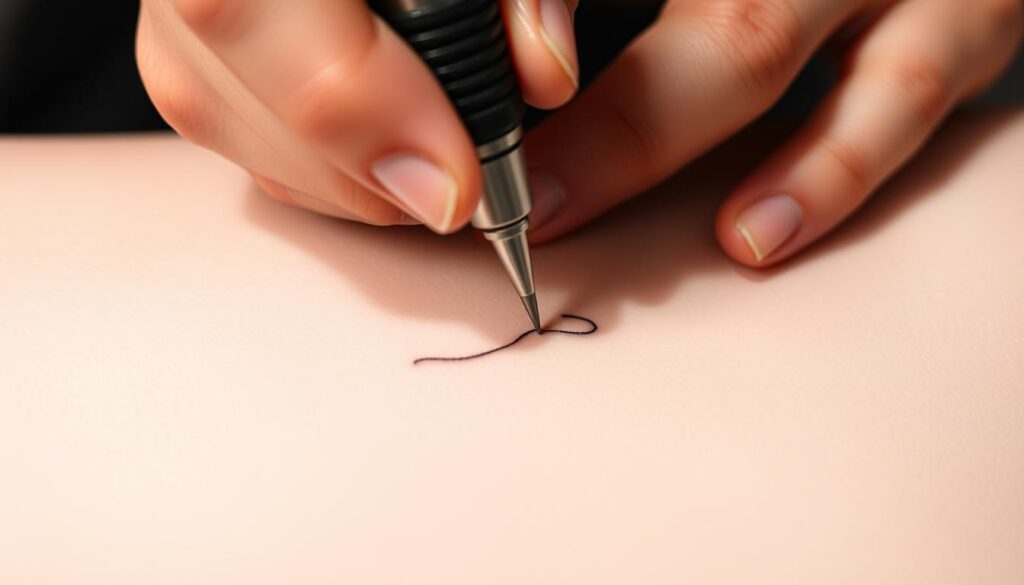
Imagine crafting artwork where every stroke defines the final masterpiece. This is the realm of single-needle body art—a method where precision meets patience. Unlike broader techniques, this approach uses ultra-thin tools to map intricate details onto your skin.
Understanding the Single Needle Technique
Here’s how it works: Artists use one needle to deposit ink in controlled, microscopic increments. This allows for lines thinner than a strand of hair and shading softer than charcoal dust. As one specialist notes: “It’s like drawing with a surgical instrument—every movement is intentional.”
Why choose this method? Designs created using single-needle methods retain crisp edges even in complex patterns. Think lace-like florals or geometric mandalas where overlapping lines stay distinct. The technique’s precision also reduces skin trauma, helping delicate areas heal cleaner.
| Feature | Single Needle | Multi-Needle |
|---|---|---|
| Line Thickness | 0.2-0.3mm | 0.5-1.5mm |
| Healing Time | 7-10 Days | 10-14 Days |
| Detail Level | Micro-Realism | Bold Contrast |
| Artist Availability | Limited | Widespread |
| Placement Options | Fingers, Ears | Arms, Back |
Finding artists skilled in pure single-needle work can feel like searching for a rare gem. Many professionals use 2-3 needles to mimic the effect while ensuring durability. Either way, prioritize portfolios showing healed results—true mastery shows over time.
Finding the Right Tattoo Artist for Fine Line Work

Choosing someone to create permanent art on your skin isn’t a decision to rush. Delicate ink work requires technical mastery—think of it like hiring a calligrapher instead of a sign painter. The right professional will blend precision with artistic vision to bring your ideas to life.
Evaluating Portfolios and Reviews
Start by exploring artists’ social media or websites. Look for consistent examples of crisp, detailed designs. As one specialist advises: “If their lines look shaky at 10x zoom, imagine how they’ll heal on your skin.”
Prioritize creators who showcase healed results (6+ months old). This reveals how their work ages—do thin strokes stay defined or blur into gray smudges? A strong portfolio demonstrates:
| Checklist Item | Why It Matters |
|---|---|
| Line Consistency | Prevents uneven thickness |
| Shading Techniques | Ensures smooth gradients |
| Placement Variety | Shows adaptability |
| Client Testimonials | Confirms reliability |
Don’t hesitate to ask for custom examples. Many artists keep private galleries of projects similar to what you’re looking for. If their style aligns with your vision—whether botanical sketches or micro-script—book a consultation.
For inspiration, explore beautiful tattoos that highlight expert craftsmanship. Remember: specialized skills often come with higher rates, but quality lasts longer than price tags.
Tattoo Aftercare Essentials for Optimal Healing
The journey to a flawless design doesn’t end when the needle stops—it’s just beginning. Proper care ensures your art stays sharp and vibrant while preventing complications. Let’s break down the steps that turn fresh ink into a lifelong treasure.
Your Daily Care Routine
Start by listening to your artist’s advice—they know how their work heals best. Clean the area twice daily with mild soap and lukewarm water. Pat dry gently with a paper towel; cloth fibers can irritate sensitive skin.
Moisturizing is non-negotiable. Use a fragrance-free lotion or specialized tattoo aftercare balm. Apply sparingly—too much product suffocates the healing process. Think of it as hydration, not drowning your skin.
Sun protection matters even after peeling stops. UV rays fade colors and blur details. If removal ever crosses your mind, proper healing now makes that process smoother later.
Avoid pools, tight clothes, and picking scabs. Your body’s natural healing works best when undisturbed. With patience, you’ll preserve every delicate stroke exactly as intended.
